Comparison of Smoking History Patterns Among African American and White Cohorts in the United States Born 1890 to 1990
- PMID: 26980861
- PMCID: PMC5009449
- DOI: 10.1093/ntr/ntv274
Comparison of Smoking History Patterns Among African American and White Cohorts in the United States Born 1890 to 1990
Abstract
Introduction: Characterizing smoking history patterns summarizes life course exposure for birth cohorts, essential for evaluating the impact of tobacco control on health. Limited attention has been given to patterns among African Americans.
Methods: Life course smoking histories of African Americans and whites were estimated beginning with the 1890 birth cohort. Estimates of smoking initiation and cessation probabilities, and intensity can be used as a baseline for studying smoking intervention strategies that target smoking exposure. US National Health Interview Surveys conducted from 1965 to 2012 yielded cross-sectional information on current smoking behavior among African Americans and whites. Additional detail for smokers including age at initiation, age at cessation and smoking intensity were available in some surveys and these were used to construct smoking histories for participants up to the date that they were interviewed. Age-period-cohort models with constrained natural splines provided estimates of current, former and never-smoker prevalence in cohorts beginning in 1890.
Results: This approach yielded yearly estimates of initiation, cessation and smoking intensity by age for each birth cohort. Smoking initiation probabilities tend to be lower among African Americans compared to whites, and cessation probabilities also were generally lower. Higher initiation leads to higher smoking prevalence among whites in younger ages, but lower cessation leads to higher prevalence at older ages in blacks, when adverse health effects of smoking become most apparent.
Conclusions: These estimates provide a summary that can be used to better understand the effects of changes in smoking behavior following publication of the Surgeon General's Report in 1964.
Implications: A novel method of estimating smoking histories was applied to data from the National Health Interview Surveys, which provided an extensive summary of the smoking history in this population following publication of the Surgeon General's Report in 1964. The results suggest that some of the existing disparities in smoking-related disease may be due to the lower cessation rates in African Americans compared to whites. However, the number of cigarettes smoked is also lower among African Americans. Further work is needed to determine mechanisms by which smoking duration and intensity can account for racial disparities in smoking-related diseases.
© The Author 2016. Published by Oxford University Press on behalf of the Society for Research on Nicotine and Tobacco. All rights reserved. For permissions, please e-mail: journals.permissions@oup.com.
Figures
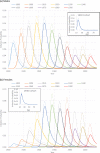
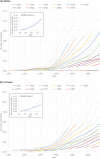
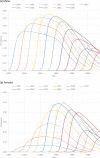
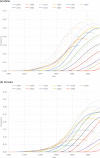
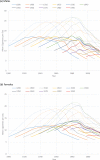

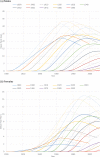


References
-
- US Department of Health and Human Services. The Health Consequences of Smoking: 50 Years of Progress. A Report of the Surgeon General. Atlanta, GA: Department of Health and Human Services, Centers for Disease Control and Prevention, National Center for Chronic Disease Prevention and Health Promotion, Office on Smoking and Health; 2014. www.surgeongeneral.gov/library/reports/50-years-of-progress/full-report.pdf Accessed August 11, 2015.
-
- Surgeon General’s Advisory Committee on Smoking and Health. Smoking and Health: Report of the Advisory Committee to the Surgeon General of the Public Health Service 1964. https://profiles.nlm.nih.gov/ps/access/NNBBMQ.pdf Accessed August 11, 2015.
-
- Warner KE, Murt HA. Premature deaths avoided by the antismoking campaign. Am J Public Health. 1983;73(6):672–677. www.ncbi.nlm.nih.gov/pmc/articles/PMC1650871/ Accessed August 11, 2015. - PMC - PubMed
-
- Warner KE. Effects of the antismoking campaign: an update. Am J Public Health. 1989;79(2):144–151. www.ncbi.nlm.nih.gov/pmc/articles/PMC1349923/ Accessed August 11, 2015. - PMC - PubMed
Publication types
MeSH terms
Grants and funding
LinkOut - more resources
Full Text Sources
Other Literature Sources

